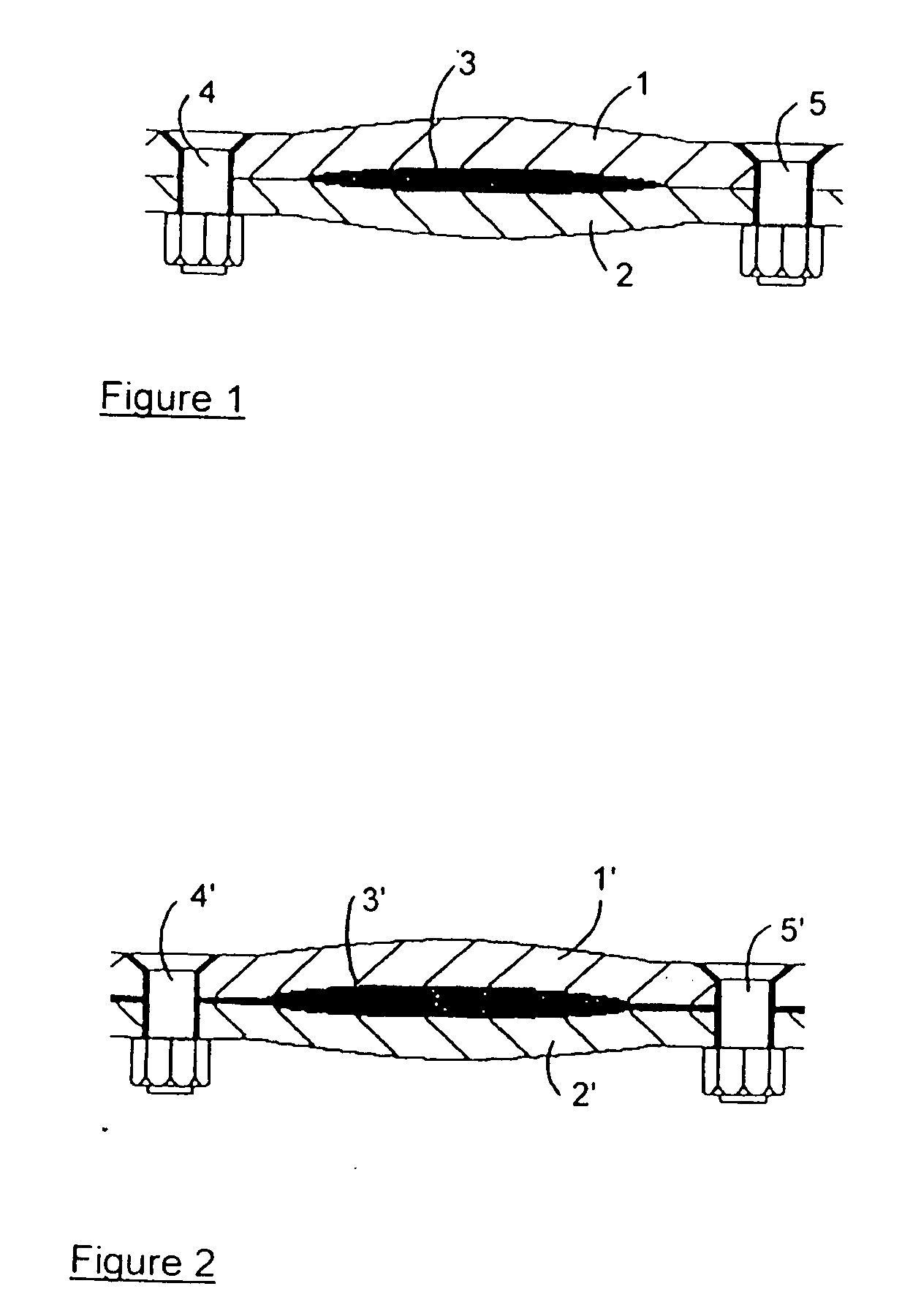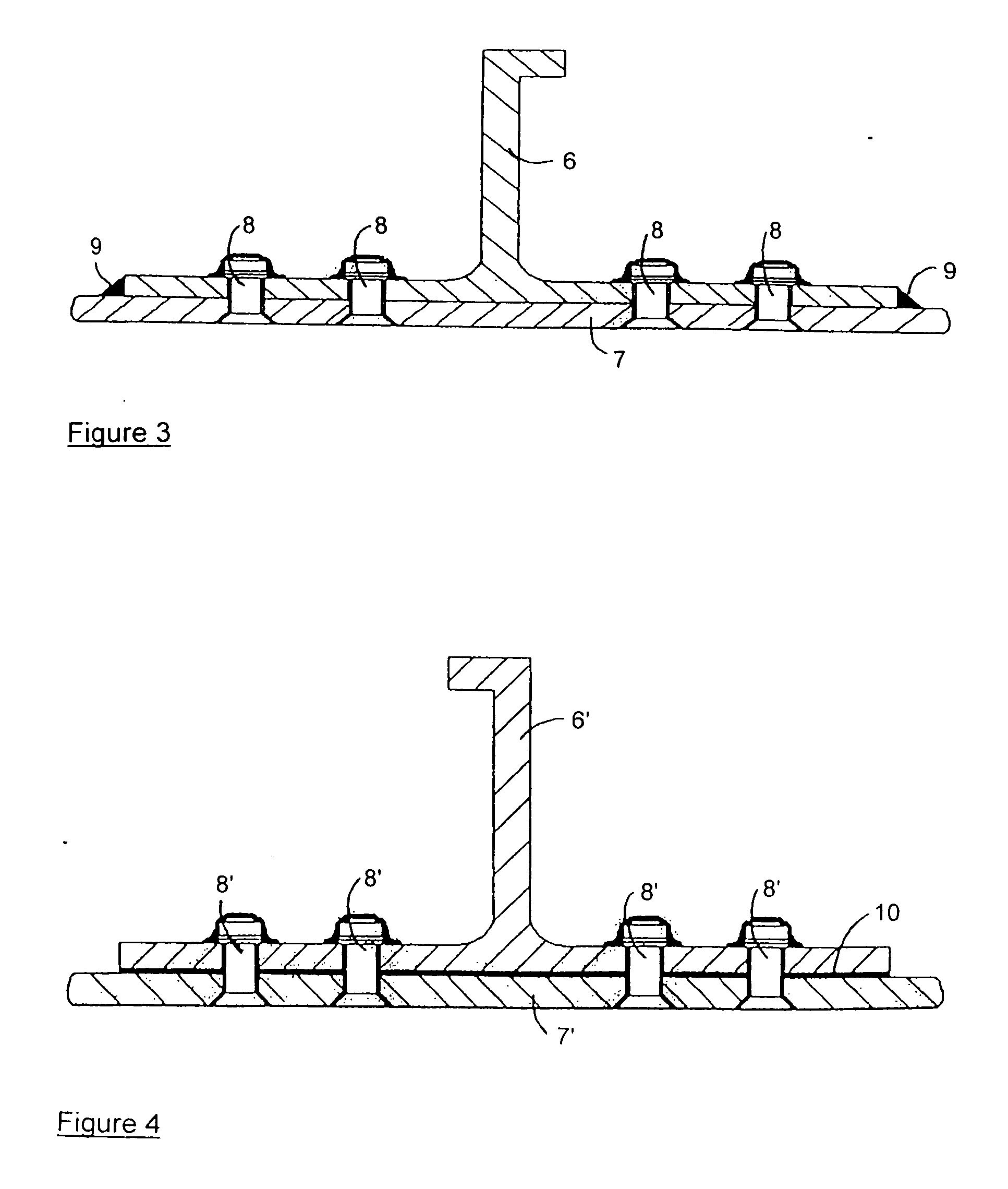Sealing material
a technology of sealing material and sealing layer, applied in the direction of resiliently mounted floors, flooring, power plant fuel tanks, etc., to achieve the effect of improving the wetness of the reinforcing element by the polysulphide sealan
- Summary
- Abstract
- Description
- Claims
- Application Information
AI Technical Summary
Benefits of technology
Problems solved by technology
Method used
Image
Examples
example
[0054] A conventional manganese dioxide polysulphide sealant, Chemetall MC238-A1 / 2 having a faster cure time than is normally used in airframe assembly (½ hour work-life grade), was mixed and evenly applied to a 200 mm×200 mm release sheet of PTFE. A 150 mm×150 mm square of 120 gram per square meter woven glass-fibre cloth of maximum thickness 0.25 mm was placed over the smoothed out sealant layer. Sealant was worked through the woven glass cloth using a plastic spatula (to remove entrapped air) and a second layer of sealant was smoothed over the glass with the spatula. A second PTFE release sheet was placed over the sealant and glass layers and the assembly was transferred to a hand press where the press was ‘bumped’ (opened and closed) to remove any further entrapped air and to flow the sealant to an even film thickness.
[0055] The press was clamped fully shut and left to cure. After 16 hours curing time, the press was opened and the PTFE release sheets were removed. A very high q...
PUM
 Login to View More
Login to View More Abstract
Description
Claims
Application Information
 Login to View More
Login to View More - Generate Ideas
- Intellectual Property
- Life Sciences
- Materials
- Tech Scout
- Unparalleled Data Quality
- Higher Quality Content
- 60% Fewer Hallucinations
Browse by: Latest US Patents, China's latest patents, Technical Efficacy Thesaurus, Application Domain, Technology Topic, Popular Technical Reports.
© 2025 PatSnap. All rights reserved.Legal|Privacy policy|Modern Slavery Act Transparency Statement|Sitemap|About US| Contact US: help@patsnap.com



